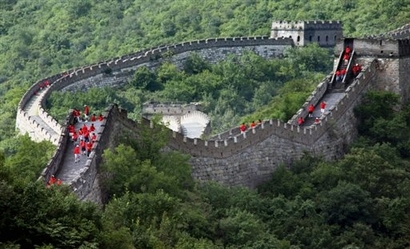
The newly discovered section, built during the Qin (221-206 BC) and Han (206 BC to 220 AD) dynasties, was found in northeastern Jilin province, Xinhua news agency said.
A state-sponsored study team found a 172-metre-long section of ruins from the wall section in Tonghua county, 11 kilometres (6.7 miles) further east than what was previously thought to be the wall's terminus, it said.
New sections of the massive ancient fortification are found on a regular basis.
Earlier this year, state media reports said the most comprehensive and technologically advanced survey of the wall found it was much longer than previously estimated.
The wall, built over centuries as a defence against northern barbarian tribes, stretched for more than 8,851 kilometres, much further than commonly cited estimates of 5,000 kilometres, according to the findings of the survey.
The two-year study was carried out by the State Administration of Cultural Heritage, the reports said.
The defensive structure included 6,259.6 kilometres of actual wall, plus 359.7 kilometres of trenches and 2,232.5 kilometres of natural barriers such as hills and rivers, according to the survey.
However, the project also said the World Heritage-listed site was in danger of disappearing in many places due to road construction and other forms of development, as well as extreme weather.



Reader Comments
to our Newsletter